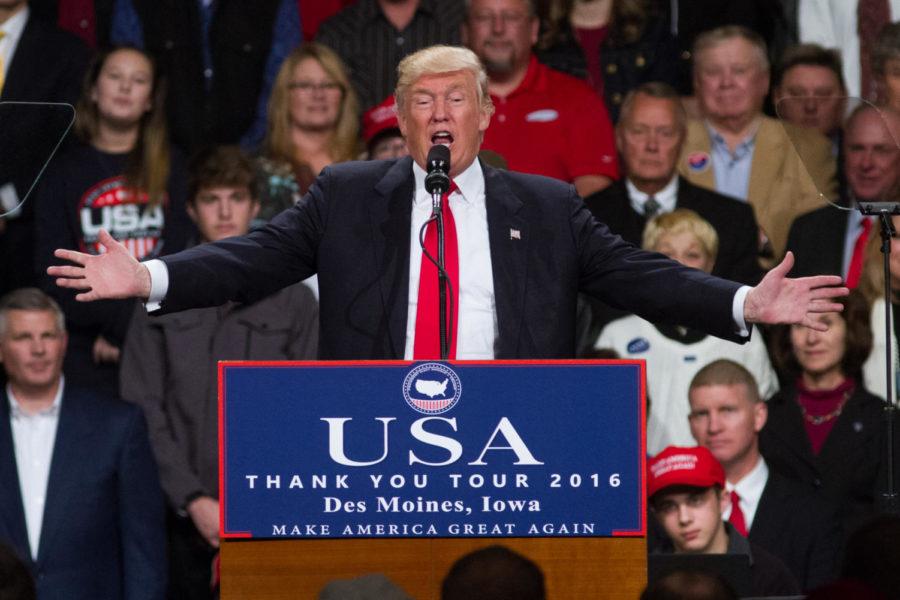Wright: Trump’s promises on jobs mean nothing until he takes action
President-elect Donald Trump speaks during a rally as part of his USA Thank You Tour, in Des Moines during the evening of Dec. 8. Trump spoke about the general election, how he would repeal Obamacare, bring jobs back to the US, and reform care for veterans.
January 8, 2017
Curiosity and concern have been expressed over how President-elect Donald Trump will implement his plan to bring back manufacturing jobs to the United States.
While job creation has greatly picked up over the last seven years, manufacturing has lagged behind white-collar industries. What follows is a comparison of Trump’s general claims and plans that could fulfill his promises to America’s disenfranchised.
First, the problem: The United States has promoted open and free trade agreements with other countries, which have taken advantage of us by making themselves more attractive to manufacturers. The result is a nation where the upper class continues to thrive while the working class finds itself underemployed.
Trump’s general response has been to put pressure on countries where manufacturing has moved to, as well as companies that have begun employing workers abroad.
On multiple occasions, Trump has proposed significant tariffs on imports. These tariffs are more helpful as empty threats, in hopes that companies will avoid them and move production to the United States.
The first issue is how particular this approach is. Sprint announcing that it will bring 5,000 jobs back to the United States has been credited as a sign of things to come. But this would need to happen daily for the entirety of Trump’s term to match job growth over the last four years.
This is definitely not a good metric for how effective a president Trump will be, as he’s had no opportunity to enact real legislation. Anything said before he takes the presidency is pure speculation. Nonetheless, Trump sees interacting directly with businesses, either through intimidation or negotiation, as a meaningful way to change the world.
The second and most worrisome of issues with his approach is how undemocratic it is. Many have expressed concern at the way Trump singles out companies at random, both publicly shaming and substantially threatening them with actions that could hurt business.
No evidence proves that he is receiving any expert advice as to what companies should be pressured to change. Furthermore, directly attacking organizations one after the other in a witch-hunt-like manner isn’t even close to the intended role of the executive branch.
This approach of singling out people and organizations and using them as scapegoats is reflected in Vladimir Putin’s opportunistic expulsion of various oligarchs. It’s not likely that Trump will, or could, use his position the way Putin does. Still, the pressure he applies is unchecked and has real consequences.
As opposed to this, Trump could change things at home so markets would want to take root in the United States. Our corporate tax rate is nearly double the world average and still much higher than countries with similar GDPs. This is seen almost ubiquitously as one of the largest sources of production cost in America, which, until recently, was about 20 percent more than in countries the United States frequently trades with.
Alternatively, in 2015, President Barack Obama proposed legislation that would make two years of community college free to anyone who could maintain a 2.0 grade point average. Though unlikely to pass through a Republican Congress, it is a clear way to revitalize American manufacturing in the long term.
Along with educating the workforce, promoting industries that show potential for growth, like medical research and software engineering, would have a stronger effect on job growth than trying to promote growth in shrinking industries, like hardware and textile manufacturing.
Trump has some clear routes he could take. In recent weeks, he’s acquired a reputation for using individualized critiques as if they were real legislation. Once he takes office, we’ll have the opportunity to see if his words reflect his actions.
















